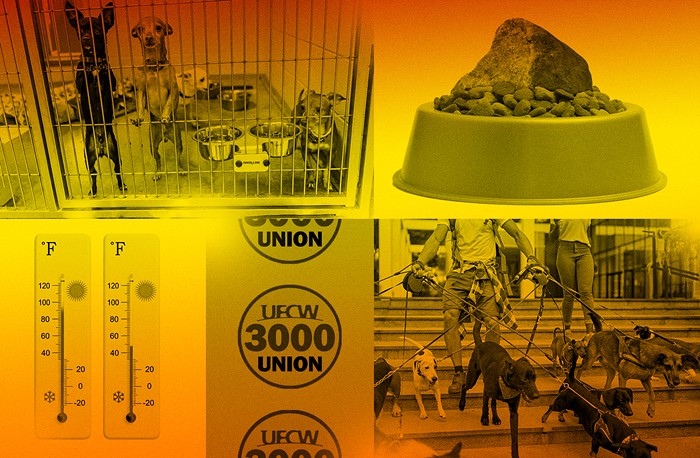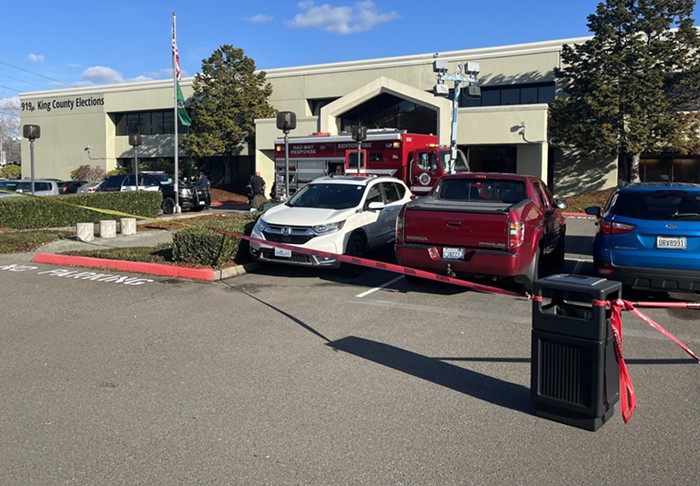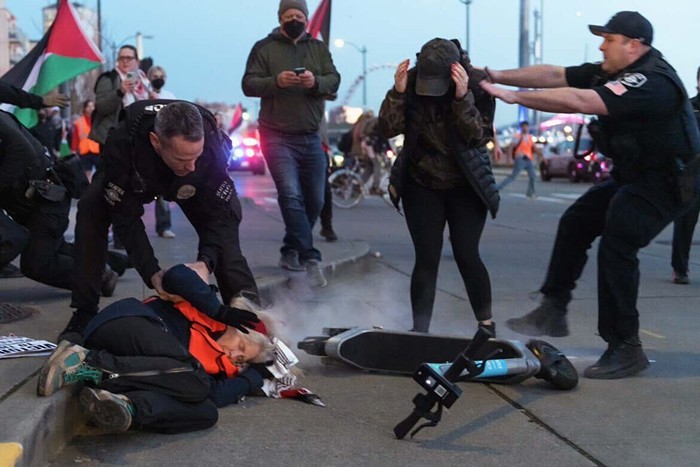
In a standing-room-only meeting today, the Seattle City Council voted on three measures to help homeless people and—holy shit—passed all three of them unanimously!
In a reversal from a similar vote two years ago, the council voted to allow three new regulated homeless encampments on public and private land in the city. Each encampment can house 100 people and will get a one-year permit that can be extended for another year. That will only help some of the 2,813 homeless people sleeping on the streets of Seattle, but still. It's one big, important step.
Then, in a move that got less fanfare (but is still important!), the council followed through on spending $375,000 it budgeted last year to expand shelter beds and try to encourage nearby cities to do the same.
Let's talk about that encampments vote first.
Even though four of the people on the dais had opposed a similar measure in 2013, they had all come around on the idea by today's meeting. So, the meat of today’s controversy wasn’t about whether the city should allow new homeless encampments, but where.
In recent weeks, council members have debated whether the city should study allowing encampments in areas other than the commercial and industrial parts of the city allowed in the bill handed down by Mayor Ed Murray. In other words: Should these new encampments someday be allowed residential neighborhoods? Council Member Kshama Sawant thinks so, so she introduced an amendment that would direct the city to study allowing encampments in all zones. Including, you know, those zones where the rest of us are allowed to live. (Before today's vote, encampments could be permitted anywhere in the city, but only for a maximum of six months, then they’re required to move. On church-owned land, they don’t need a permit.) More about all that right here.
The council members who opposed the study of residential areas killed it in committee, but Sawant brought it back to the full council today.
Then, because a study about maybe doing something someday is just too much for Sally Clark, Clark introduced her own watered down version of Sawant's idea. Instead of studying the possibility of allowing encampments in all zones, Clark’s plan would have only studied allowing them in multifamily zones, which she says mirrors where the city allows shelters. That would cut out even considering a few other zones Sawant's proposed study included, like land owned by Sound Transit and the Washington State Department of Transportation. Again, it's just a study, and another council vote would be necessary later to actually change the law and allow encampments in residential zones. So, why restrict it?
“I think the study of expansion to multi-family for this particular new permit type is a better use of [the Department of Planning and Development's] time,” Clark told me by e-mail when I asked her that today. “We should ask DPD to review what we think we’d actually do.”
That line of logic didn't satisfy her colleagues. Clark's effort died and Sawant's passed, meaning DPD will study the environmental impact of allowing camps in all zones of the city and report back to the council later this year. Then, they'll have to vote on actually doing something.
"By agreeing to study all zones, the city council will uphold the principle that we are all residents, whether we have a roof over our heads or not," Sawant said to applause from a crowd of advocates holding signs that said "Tent cities save lives" and "No redlining."
Murray, whose office opposed Sawant's amendment, released a statement conveniently avoiding any talk of the amendment, but praising the council's vote. "I am pleased the council was able to work collaboratively and unanimously pass a proposal that failed just less than two years ago," Murray said.
The city will now begin considering proposals for the three new tent encampments, which can be either self-managed or overseen by a service agency, but must provide access to social services and collect demographic data.
Now, about those two other measures. The council authorized spending two pots of money it had set aside during last fall's budgeting process:
• $200,000 to implement the findings of the mayor's task force on unsheltered homelessness, which in December said the city should allow new encampments and expand shelter beds, especially for young people. This money will be split between new shelter beds for adults at the King County Administration Building ($70,000), a new youth shelter run by PSKS near Capitol Hill ($60,000), and case managers for existing homeless encampments ($70,000). This only funds these services this year, so we'll have to see what the mayor and the council do in the next round of budgeting.
• $175,000 in matching funds for other governments in the region that want to expand their homeless shelters. This (along with some money from United Way) is meant to convince places like Kirkland or Redmond to improve access to shelter so homeless people who live in those towns aren't forced to come into Seattle to get services.
I'm not going to make a habit of saying this, but good job today, city council!
Now, let's see how eager you all are to take Sawant's suggestion for the city's next huge challenge: making a "Bertha-sized" investment in building affordable housing.


















